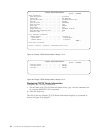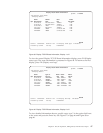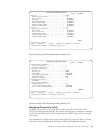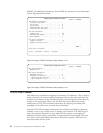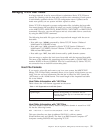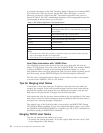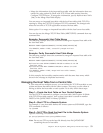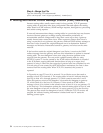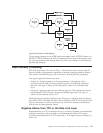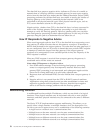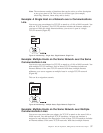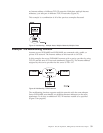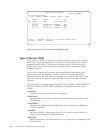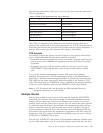
Step 4—Merge the File
Type the following FTP subcommand:
quote rcmd mrgtcpht fromfile(qusrsys/m03host) frommbr(host)
IP Routing and Internet Control Message Protocol (ICMP) Redirecting
Internet routing tables usually remain static for long periods. TCP/IP generates
routing tables at activation time from configuration data and adjusts the routing
tables based on ICMP redirects, SNMP manager requests, dead gateway processing
and socket routing requests.
If network interconnections change, routing tables in a particular host may become
incorrect. Because gateways exchange routing information periodically to
accommodate network changes and to keep their routes up to date, a gateway
usually knows better routes than a host. When a gateway detects that a host is
using a route that is not optimum, the gateway sends an ICMP redirect message to
that host. It also forwards the original datagram on to its destination. Redirect
messages are limited to interactions between a gateway and a host on the same
network.
If the host that sends the original datagram is an iSeries, it receives the ICMP
redirect message from the gateway and uses this information to update its internal
routing table. The next datagram is then sent using the more optimum route
received from the gateway. You can see the updated routing table by using
NETSTAT, option 2. A route created by the ICMP redirect mechanism is recorded
in the IP dynamic routing table and remains there as long as an upper level
protocol is using it. When the last upper-level protocol user has completed its unit
of work using a route created by the ICMP redirect mechanism, the route is then
removed from the routing table. When TCP/IP is restarted, this process is
repeated.
In Figure 46 on page 55, host A1 in network 2 is an iSeries server that sends a
message to host A2 in network 3. The routing table in host A1 indicates that the
first hop to host A2 is through gateway G1, which connects networks 1 and 2.
When this gateway receives the datagram, it forwards the datagram to gateway
G2, which sends it to the host A2. Gateway G1 then sends an ICMP redirect
message to host A1 to inform it that a better route to host A2 is to use gateway G2
as the first hop. This information updates the internal routing table in host A1, and
the next datagram to host A2 in network 3 is sent to gateway G2 as the first hop.
The gateway then sends the datagram to host A2. When the TCP/IP services are
stopped, the collected routing information is deleted and host A1 starts the
learning process again.
54 OS/400 TCP/IP Configuration and Reference V5R1



